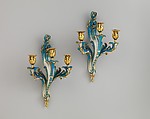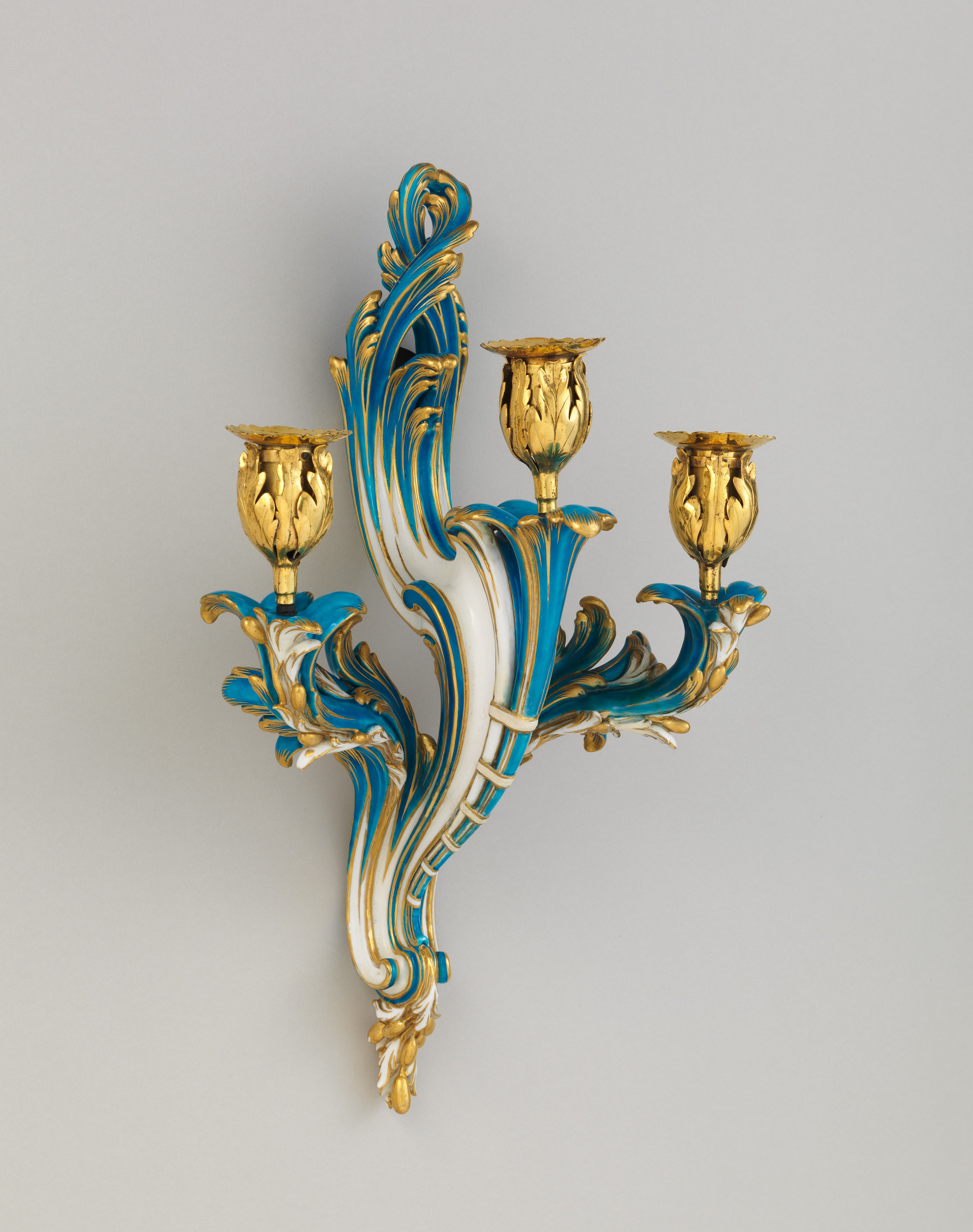Two wall sconces (Bras de cheminée)
Model attributed to Jean-Claude Duplessis French
Manufactory Sèvres Manufactory French
In the 1760s and 1770s in particular, the Sèvres factory consistently introduced products with new forms, new types of decoration, and even new functions. Until that time, sconces of high quality were made either of gilt bronze or gilt wood. It was a significant technical achievement to produce them in porcelain, and small firing cracks on these objects in areas where the porcelain curves testify to the difficulties involved.
Perhaps the challenges in molding and firing porcelain sconces explain why so few of them were produced. About twenty pairs were made at Sèvres between 1761 and 1768, the period during which these remarkable objects would have been in fashion. Their pronounced scrolling forms incorporating leaves and berries and their sinuous profile epitomize high Rococo design in the decorative arts. They were clearly held in high esteem; Madame de Pompadour owned two pairs, and Louis XV acquired at least ten with a green ground in 1762.
Due to rights restrictions, this image cannot be enlarged, viewed at full screen, or downloaded.
This artwork is meant to be viewed from right to left. Scroll left to view more.



